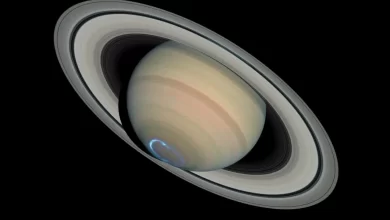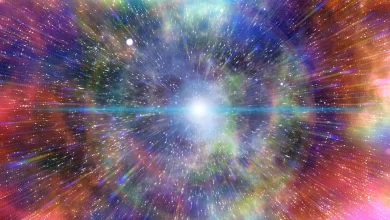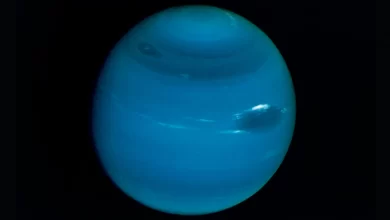Sun is the most important source of energy for life on Earth. Every living being gets their energy from the Sun. It is the source of light and heat, without which life on Earth would not be possible. Green planets would not be able to produce food for other living creatures.
- An area of the Sun’s surface size of a postage stamp shines with the power of about 1,500,000 candles.
- If the Sun stopped shining suddenly, it would take eight minutes for people on Earth to notice because it is how long it takes sunlight to reach Earth.
- The Earth orbits the Sun at 30 km per second or 67,000 mph.
- The diameter of the Sun is about 1.39 million kilometers (864,000 miles), or 109 times that of Earth.
- The mass of the Sun is about 330,000 times that of Earth. The Sun accounts for 99.8% of the total mass of the Solar System.
- Sun’s mass consists of hydrogen (~73%); the rest is mostly helium (~25%), with much smaller quantities of heavier elements, including oxygen, carbon, neon, and iron.
- In its core, the Sun currently fuses about 600 million tons of hydrogen into helium every second, converting 4 million tons of matter into energy every second as a result.
- The Sun weighs 2,000 trillion trillion tones, about 300,000 times as much as the Earth, even though it is made almost entirely of hydrogen and helium, the lightest gases in the Universe.
- The Sun’s core is so hot that a piece of it the size of a pinhead would give off enough heat to kill a person 160 kilometers away.
- The Sun provides our planet with 126,000,000,000,000 horsepower of energy every day. This means that 54,000 horsepower is being delivered to every human being on Earth in each 24 hour period.
- If you could fold a piece of paper 50 times, its thickness would be ¾ of the distance from Earth to the Sun.
- The Sun travels at a speed of 250km (155 miles) per second, but it takes 220 million years to orbit the galaxy; it has made 20 orbit journeys till now.
- The 11-year sunspot cycle is actually a part of a larger 22-year cycle in which the entire magnetic field of the Sun may reverse itself!
- Every 3 seconds, the Sun emits more neutrinos than the number of atoms in all the humans who have ever lived. Neutrinos are 1 lakh times smaller than electrons, but there are so many neutrinos that they may outweigh all the visible matter in the Universe. If an atom were the size of the Solar System, a neutrino would be the size of a golf ball.
- Enough energy reaches the Earth from the Sun every second to fulfill all our power needs for a year.
- The temperature on the surface of the Sun is about 6,000 degrees Celsius (10,832 degrees Fahrenheit). Whereas at the center, it has a scorching 15,000,000 degrees Celsius (27,000,000 degrees Fahrenheit)
- The atmospheric pressure at the center of the Sun is 340 billion times greater than at sea level on Earth.
- The Sun loses 4 million tonnes of weight each second due to fusion.
- The magnetic poles of the Sun switch place every eleven years in a cycle called Solarmax. The Earth’s magnetic poles do this too, but much less regularly.
- The Sun is not the largest thing in the Solar System – the comet Holmes is even bigger. Although the solid center of the comet is only 3.6 kilometers (2.2 miles) across, the coma (the cloud of dust and gas around it) is wider than the Sun.
- In around a billion years, the Sun will have grown so much that the Earth will be too hot to live on. It will, however, make Pluto pleasantly warm and habitable for a while before the Sun increases in size even more and eventually dies.
- In two weeks, the Sun produces as much energy as that stored in all the coal, gas, and petrol reserves that there have ever been on Earth!
- Every second, the Sun is shooting one million tons of matter into space.
- Your age is the number of times you’ve orbited around the Sun.
- The Sun rotates around its axis every 26 days but, because it’s made of gas, different bits rotate at different speeds.
- The Sun is located in the Milky Way between the third and fourth arms of a cloud of stars known as the Local Fluff.
- The Sun’s core releases the same amount of energy every second, which is equal to 15 billion nuclear bombs.
- No solar eclipse can last longer than 7 minutes and 58 seconds because of the speed at which the Earth and Moon move. The last time an eclipse occurred longer than 7 minutes was on June 30, 1973.
- According to the estimates of scientists, if the Sun were the size of the dot over a letter “i,” the nearest star would be a dot 10 miles away.
- The gasses in a sunspot average 3,000 degrees Fahrenheit (1649 °C) cooler than the rest of the Sun.
- Sunlight has a brighter side too. Sunlight helps in the release of vitamin D in the human body, and it enhances people’s mood by stimulating their bodies to release healthy hormones.
- Every second, the Sun pumps more than 4.26 million metric tons of material into the space through the solar wind (electrically charged particles.)
- Every second, the Sun converts about 700 million tons of hydrogen to 695 million tons of helium and 386 billion billion megawatts of energy. It’s been doing this for about 4.5 billion years and will keep going for another 5 billion years before growing to a red giant and gobbling up the Earth.
- The full moon always rises at sunset and sets at sunrise.
- The Sun is about 5 billion years old and half away through its life as a medium-sized star, and it will probably live for around 10 billion years.
- A solar flare is an explosion from the Sun’s surface produced when hugely powerful magnetic fields snap and break apart under immense stress. One of these flares can have the power of a billion Hiroshima bombs.
- The Sun also causes tides on Earth and is about half the strength of the moons.
- The Sun is actually a star, and it is larger than most of the stars in the galaxy.
- The strongest color light emitted by the Sun is green, but we see the combination of all the Sun’s colors as white light.
- The diameter of the Sun is roughly 860,000 miles (1,384,036 kilometers). Whereas the diameter of Earth is 12,742 km.
- The Earth actually takes 365.24219 days to orbit the Sun, which is called one Solar Year. To compensate for the missing 0.242 days, the western calendar adds an extra day in February every fourth (leap) year but misses out three leap years every four centuries.
- All the coal, oil, gas, and wood on Earth would only keep the Sun burning for a few days.
- The Sun loses 1.5 trillion grams or 1.5 million tonnes of material every second.
- The density of the Sun is up to 150 g/cm, which is 150 times the density of water.
- The Sun puts out more energy in 1 second than has been used in all of human history.
- The sky is blue because when sunlight collides with our atmosphere, colors of the shortest wavelengths (violet and blue) are scattered – and our eyes are more sensitive to see blue.
- Hipparchus was the first astronomer to try to work out how far away the Sun is.
- Paradoxically, it is the Sun’s gravity that keeps the planets in orbit around it, just as the Earth’s gravity keeps the moon and satellites in orbit around it. The reason they do not just fall into the Sun is that they are traveling fast enough to continually “miss” it.
- The 11-year sunspot cycle is actually a part of a larger 22-year cycle in which the entire magnetic field of the Sun may reverse itself!
- Only One one-billionth of the energy released by the Sun reaches Earth.
- For 186 days, you cannot see the Sun in the North Pole.
- If you flew in a jumbo jet (at normal cruise speed) for 24 hours each day, then you could reach the Sun in about 19 years. The total distance of Earth to the Sun is about 147.72 million km
- A bucket filled with Earth would weigh about five times more than the same bucket filled with the substance of the Sun. However, the force of gravity is so much greater on the Sun that a man Weighing 150 pounds on our planet would weigh 2 tons on the Sun.
- Sun is so massive that 1.3 million Earth would be needed to completely fill up the Sun.
- Till now, 28 missions to the Sun took place. “Missions to the Sun” lumps various types of missions, including telescopes in Earth orbit and probes that have orbited the Sun.
References
- Amazon.ae(an area of one postal stamp on sun is equivalent to candles)
- Wikipedia-Sun
- Arcamax.com(Total energy sun provides in the form of horsepower)
- Quora.com(If you could fold a piece of paper 50 times the distance of earth from the sun)
- Solarsystem.nasa.gov(The sun travels at a speed of 250km/second)
- Wikipedia-Sunspot
- Wikipedia-Solar Neurino
- National Geographic-Solar Power
- Briankoberlein.com(4 million tonnes of fuel is used by sun every second)
- spaceplace.nasa.gov(The magnetic poles of the sun are switched every 11 years)
- Space.com(Incredible comet in our solar system is bigger than Holmes)
- Usm.maine.edu(In around 1 billion years sun will become so huge that earth will be no longer a habitable zone)
- Old-www.sandia.gov(in two weeks sun produced that much of energy which is equivalent to burning all coal, gas and other petroleum products together)
- History.nasa.gov(every second sun is shooting one million tons of matter into space)
- Spaceplace.nasa.gov(temperature of gases in solar spots)
- Universetoday.com(Sun pumps more than 4.26 million metric tons of material into space)
- Wikipedia-Full Moon(the full moon always rises at sunset and sets at sunrise)
- Wikipedia-Solar Flare(One solar flare can have the power of a billion Hiroshima bomb)
- scijinks.gov(Why our sky is blue)
- Wikipedia-Hipparchus
- Spaceplace.nasa.gov
- Nasa.gov(Sunspot cycle)
- Wikipedia-Polar nights(if you fly a jumbojet 19 years you would trave the distance to the sun)
- Solarsystem.nasa.gov(1.3 million earth would fit in sun)
- Wikipedia-Missions to the Sun






